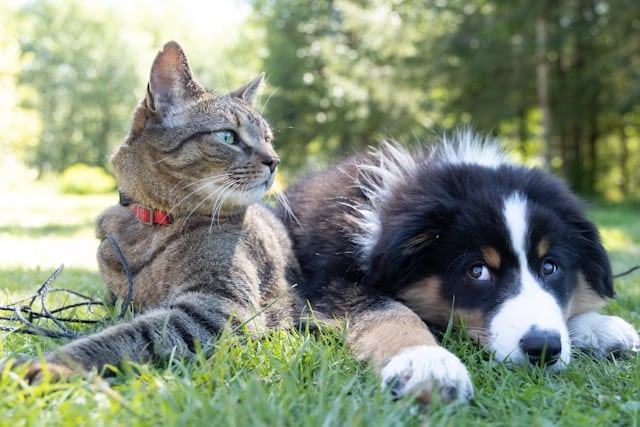The desire to craft a green oasis in your home is an ambition we can all understand. Filling your living space with indoor plants can do wonders for your aesthetics while improving your air quality. However, finding plants that are safe for your pets can be a bit of a challenge. Dogs and cats, being the curious creatures they are, tend to nibble on plants. Some houseplants, unfortunately, can be toxic if ingested by your beloved furry friends.
But fear not! There are numerous pet-friendly plants available, safe for both cats and dogs. You can still amass an indoor jungle and ensure the well-being of your pets. This article will guide you on selecting the best non-toxic plants for creating an indoors oasis for your pets.
A lire également : How to Create a Recovery Room for Post-Surgery Cat Care?
Best Non-Toxic Houseplants for Pets
When it comes to the best pet-safe houseplants, there are several factors to consider. First and foremost, the plant should not be toxic to your pets. In addition, consider the light and care requirements of the plant. A plant that thrives in your living conditions will be healthier and more attractive.
Spider Plants
Spider plants are excellent indoor plants that are safe for both cats and dogs. They are known for their air-purifying qualities and are incredibly easy to care for. These plants prefer bright, indirect light and well-drained soil. However, they are quite adaptable and can tolerate less ideal conditions.
A découvrir également : How to Train a French Bulldog Not to Snore Loudly at Night?
Boston Ferns
Boston Ferns are another great pet-friendly option. These ferns are non-toxic to cats and dogs and can even provide a fun, safe plaything for curious pets. Boston Ferns prefer humid environments and indirect light, making them ideal for bathrooms or kitchens.
Areca Palm
Areca Palm is a pet-safe plant that can add a touch of tropical appeal to your indoor space. This plant is not only safe for pets but is also renowned for its air-purifying abilities. Keep in mind that Areca Palms prefer bright, indirect light and slightly moist soil.
How to Ensure Your Plants and Pets Coexist Peacefully
Having indoor plants can be a joy, but ensuring they coexist peacefully with your pets requires careful consideration. It’s not just about choosing non-toxic plants; it’s also about creating an environment where both can thrive.
Position Your Plants Strategically
Positioning your plants strategically can help prevent any potential problems. Keep plants out of reach, particularly if you’ve noticed your pets showing interest in them. Hanging planters can be a fantastic solution, as can tall shelves.
Train Your Pets
Training your pets not to chew on plants can be helpful. Positive reinforcement works best. If your pet leaves the plant alone, reward them with a treat or a favorite toy.
Use Pet-Friendly Fertilizers
Some fertilizers can be harmful to pets. Opt for pet-friendly ones to ensure the safety of your animals.
Caring for Your Indoor Plants
Caring for your indoor plants correctly will maximise their health and longevity, and in return, they’ll improve the air quality in your home and add to the overall aesthetics.
Light Requirements
Understanding the light requirements of your indoor plants is crucial. Some plants prefer bright, indirect light, while others can thrive in low light conditions. Determine the best position in your home for each plant based on its light needs.
Watering and Soil Conditions
Watering needs can vary drastically from plant to plant. Some prefer their soil to dry out completely between waterings, while others prefer consistently moist soil. Overwatering is a common problem with houseplants, so make sure to research each plant’s specific needs.
Regular Pruning
Regularly pruning your plants will help them maintain a healthy shape and size. This is especially important for fast-growing plants, which can quickly become overgrown if not properly maintained.
Understanding What Makes a Plant Toxic
Lastly, understanding what makes a plant toxic can be beneficial. Plants can be toxic due to the presence of certain chemicals that are harmful if ingested. Many toxic plants will cause symptoms such as vomiting, diarrhea, or even more severe health problems in pets.
This understanding can help you make informed decisions when it comes to selecting plants for your indoor oasis. While this article provides a good starting point, always check a new plant’s toxicity before bringing it into your pet-filled home. Remember, creating an indoor jungle doesn’t mean putting your furry friends at risk. There’s a world of pet-friendly plants out there waiting for you to discover.
Adorning Your Space with Pet-Safe Plants
Now that you have a good idea of some of the best non-toxic plants for your indoor oasis, let’s explore how you can decorate your home with these pet-friendly greens. Ensuring that your plants are not just safe for your pets, but also add aesthetic value to your home, can be quite an exciting endeavor.
Start Small
If you’re new to indoor gardening, start small. Choose easily managed plants like Spider Plants or Boston Ferns which require minimal maintenance and are safe for your furry friends. Plus, their regular price is often quite affordable, making them ideal for beginners.
Create a Focal Point
You can use larger plants like the Areca Palm to create a focal point in your living room. This tropical plant is not only pet-safe but also adds a touch of class and sophistication to your space. Remember, it thrives in bright, indirect light, so place it near a window where it will receive plenty of natural light.
Use a Variety of Plants
Mix and match different types of non-toxic plants to create a diverse indoor jungle. This not only enhances the visual appeal but also improves air quality, thanks to the air-purifying qualities of plants like the Spider Plant and Areca Palm.
Incorporate Hanging Plants
Hanging plants can add a sense of height and depth to your home decor. Plants like Boston Ferns are perfect for hanging baskets. Plus, they are safe for cats and dogs and can be kept out of reach of curious pets.
In Conclusion: A Green Oasis for Pets
Creating an indoor oasis using non-toxic plants is a great way to enjoy the benefits of indoor plants while ensuring the safety of your pets. It’s crucial to remember that while certain plants are pet-safe, their position, care, and the use of pet-friendly fertilizers are just as important to ensure they coexist peacefully.
Understanding the needs of your plants in terms of light, watering, pruning, and soil conditions can go a long way in ensuring their healthy growth. Incorporating a variety of plants, from the easy-to-care-for Spider Plants to the larger, air-purifying Areca Palm, can turn your home into a lush green space.
Finally, be aware of the factors that make a plant toxic to pets. Always do your research before bringing a new plant into your home to ensure it’s safe for your furry friends. With the right choices, your indoor garden can flourish while providing a safe environment for your pets.
So go ahead, explore this world of pet-friendly plants, and create an indoor jungle that’s safe and beneficial for your pets, while adding charm to your home decor.











